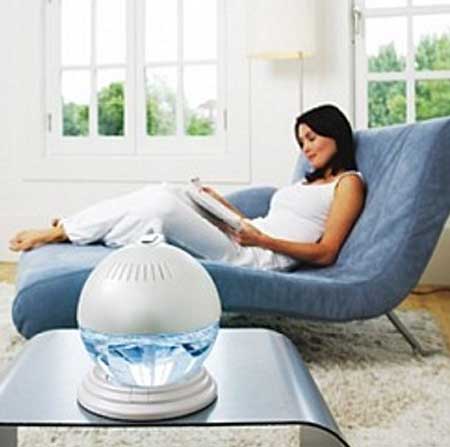Poor indoor air quality is caused by the release of airborne pollutants inside a home. These pollutants can come from pollen, household cleaning products, tobacco, dirt, pesticides pets, and volatile organic compounds from paints, carpets and adhesives.
Indoor air pollution is harmful for the residents of a home. In addition to causing sickness, it reduces a person’s ability to concentrate and accomplish specific tasks. Human symptoms for poor air quality include nausea, irritable skin, eye irritations, headaches, allergies and fatigue. There are also long terms effects such as asthma, cancer, heart problems and respiratory tract infections.

fresh air photo courtesy of ecofriend.com
To improve indoor air quality, sufficient ventilation must run through a house to decrease the concentration levels of indoor pollutants in the air. Ventilation can occur through natural ventilation and mechanical ventilation. But the best way of improving your air quality is to prevent pollutants from mixing with the air we breathe in the first place.
Following are a few tips to improve the indoor air quality in your home:
– Improve natural ventilation by opening the windows in your home.
– Make sure your central air conditioning system is supplied with fresh air from outdoors. The air conditioner room can use a sheet metal duct to bring in outdoor air or have an opening in the room that lets fresh air in from outside.
– Use exhaust fans in bathrooms and rooms where cleaning products are stored or keep those rooms well ventilated.
– All household chemicals should be kept in one room with an exhaust fan to prevent the fumes from paints, adhesives and cleaning products to mix with indoor air.
– To keep dirt and other pollutants out your home, use floor grilles at all entrances to the house so that people can shake the dirt from their shoes before entering.
– Replace the filters in your air conditioner regularly to make sure that they are not saturated with dirt.
– Purchase paint and adhesives that do not contain volatile organic compounds (VOC’s). VOC’s are organic chemicals found in most paints and adhesives that can cause cancer, kidney problems and damages to the central nervous system.
– Furnish your home with houseplants. They absorb carbon dioxide and VOC’s while releasing oxygen that is beneficial to humans.
To determine if your home’s indoor air is healthy, you can measure it with an indoor air quality testing kit. These kits will cost you around $100, but they can measure pollutant concentrations, carbon monoxide levels, humidity, allergen levels, dust concentration and other sources of air pollution in your home. $100 may seem like a lot, but it is definitely worth it if there are people in your home with allergies or you find that there are people getting sick all the time.
Poor indoor air quality affects everyone health and productivity so it is important to keep your home as free from airborne contaminants as possible.
Mauro Small writes for Go Green Academy, an information website on topics related to green living, climate change and sustainability. You can read more about his website by going here.